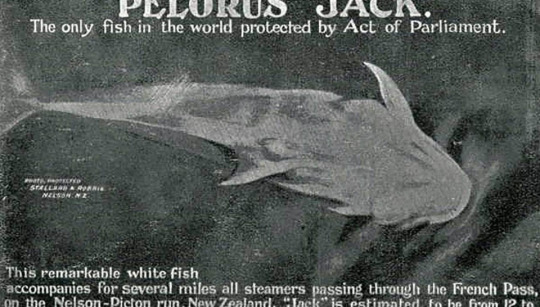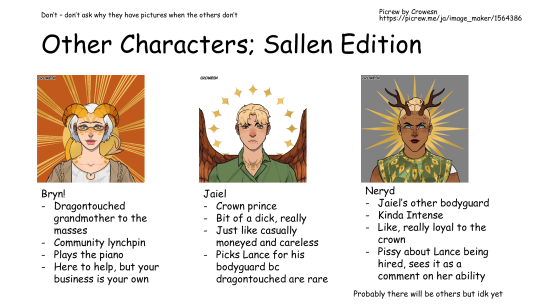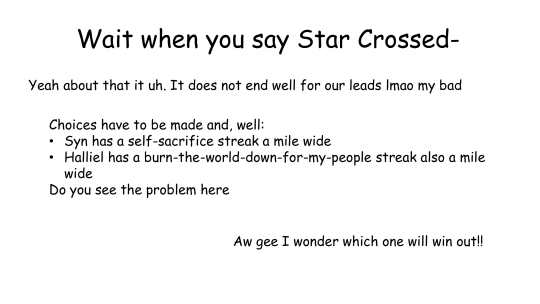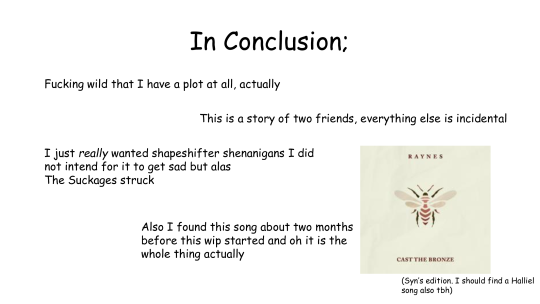#Anecdotes of Ages
Explore tagged Tumblr posts
Text

have some trans swan lake barbies
#artists on tumblr#my art#undescribed#havent seen the movie in way over a decade but the grand council of trans your gender will check out my file this month to approves or#disapprove me starting hrt. and this movie indirectly led me to me knowing i wasnt my agab at the ripe age of 4 AND the anecdote had my doc#write 'dysphorie de genre précoce' on my file which is just hilarious set of words for some reason. so i drew this as good luck for me whil#i wait for them to announce the news. infinitely funny to me that barbie's dress really is trans flag colored. foreshadowing of my life.
4K notes
·
View notes
Text

Try these out!
#my art#fan art#what we do in the shadows#wwdits#nandor the relentless#monster high#draculaura#mh g3#redrew an oldie#bc I didn't like it the first time and now I love it#she's older than him by like 900 years#but she's NICER and also not afraid to break societal norms that would prevent her from dating a certain group of ppl#and also they're friends#they probably wouldn't be friends#but i think they could talk about how lonely it can get. living for so long. until you meet the right group of people#i think they would tell anecdotes to each other. once Nandor got past the silly relentless warrior act. and she finally got to talk to-#someone closer to her age that didn't look down on her#idk man I just think about characters so much. I want them all to be buddies#AND ALSO THEYRE BOTH ASIAN YAY
449 notes
·
View notes
Text
Pelorus Jack - the helping dolphin
The first sighting of Pelorus Jack a Risso's dolphin (the determination was based on photos) was around 1888, when it appeared in front of the schooner Brindle, which was travelling through French Pass, New Zealand. Jack stood out due to its bright colouring and white head and there were no other similar animals in the area. From then on it regularly appeared when ships travelled from Admiralty Bay and Pelorus Sound / Te Hoiere into Cook Strait and so it was named after the sound.
This route was dangerous for shipping due to shallows, treacherous currents, wild eddies and underwater rocks; there were no accidents when Pelorus Jack was present. Jack quickly became a lucky charm; it seemed to guide the ships through the dangerous straits and usually stayed with a ship for about 20 minutes. Sometimes the skippers would also wait for it when they entered the Strait.

Pelorus Jack - French Pass, New Zealand
In this way, Pelorus Jack became well known to all sailors and also to the local population. When a drunken passenger from the steamer Penguin shot at the dolphin in 1903, injuring it in the fin, the crew could only be prevented from lynching the shooter by force. The dolphin did not show itself for a fortnight and it was feared that it was dead. As a result, the Sea Fisheries Act was passed in New Zealand on 26 September 1904, which placed Pelorus Jack under protection. This was probably the first individual sea creature to be protected by law. According to legend, however, it has never helped the penguin again since this incident. Without the help of the friendly animal, the Penguin was shipwrecked in the passage.

The last sighting was in April 1912, after which it disappeared without a trace and numerous rumours about its disappearance surfaced. But his story managed to become known worldwide and statues were erected in its honour and even a children's song and a chocolate brand name were created.
#naval history#naval anecdote#pelorus jack#helping dolfin#19th century#early 20th century#age of steam
67 notes
·
View notes
Text
anyone interested in talking about the iconic 2000's middle-grade-bordering-on-ya book series gallagher girls??
#okay incoming rant about this series#i read the first book when i was 10 or 11 and i was absolutely obssessed with it. i read it so many times i had the entire story memorized#the issue was that i could not find the rest of the series anywhere. it was either sold out or out of stock#and then i found out that only the first 3 books had been translated into my first language so at that point i kinda gave up on them#anyway#flashforward to a couple of weeks ago#i was re organizing my bookshelf and on the back i found LYKY (is this how y'all are abreviating it??)#and remembred how much i loved it#and since i'm now fluent in english and was stuck at home recovering from a surgery i decided to download the entire series and read it#to find out what the fuck happened afterwards#long story short i read all six books in 4 or 5 days#and i haven't stopped thinking about them since#it's actually so funny how little information we have in the first book#i went all of these years thinking it was mostly a silly series about a boarding school for spies when actually SO MUCH happens afterwards#i can't believe i went all of these years unaware of zach goode's existence#truly character of all time#but also i can't stop thinking about how interesting it would have been if zach had come to hate the circle and his mom during the series#rather than before#make it a true enemies to lovers#and have us witness that portion of his character developement in real time instead of being told about it#like him slowly realizing through cammie and his time at gallagher that maybe what they were doing is wrong#i think it would have been very interesting to read#although let's be real it took me until halfway through book four to trust him and he was fully one of the good guys so..#but yeah i have a lot more to say but these tags are long enough#gallagher girls#okay i just want to add another funny anecdote about my experience with this series#my copy of LYKY has an age warning in the back recomending that readers should be above 13 yo to read it#and i distinctly remember finishing it and thinking the warning was kind of dumb bcs besides a few mentions of death and other heavier topi#nothing really happened#and now i realize it was a warning for the rest of the series not just the first book because jesus fucking chirst everything after
69 notes
·
View notes
Text
hey. any american that Might see this and is eligible to vote. go fucking do it, no excuses.
even if you cannot be bothered. even if you think it is completely pointless. because this recent trump shooting is gonna INCREASE the votes he's gonna get, and even if you believe things are completely cooked already, would you rather done what you can to stop it, or sit with the fact that you helped Trump win by inaction?
we are NOT completely cooked. no. sure, things are looking bad, but we are NOT doomed, and I cannot stress this enough.
if you cannot do it for your fellow americans, do it for the people in smaller countries with current govts pretty much worshipping Trump (coming from a Hungarian girl, currently living in a fucking autocracy, with a prime minister that worships Trump). if the us does something atrocitous, the rest of the world is much more likely to follow in its footsteps and do it too.
do it for the climate and the people literally everywhere on Earth, because another Trump presidency would fuck over the climate completely. do it for the people already dying and being displaced because of it. there is a lot of such people.
do it for the Palestinians. yeah, genocide Joe and all, but Trump would be INFINITELY WORSE.
do it for the queer people of the world. especially the trans people.
please.
#us politics#donald trump#us elections#vote biden#vote#vote democrat#lgbtq rights#lgbtqia#trans#trans rights#free palestine#free gaza#gazaunderattack#i don't know why i felt compelled to make this post but#like#please#random personal anecdote i've hated trump since like age 10 when my pet bunny died of heat exhaustion from a climate crisis heatwave.#so like yeah
46 notes
·
View notes
Text
3.5 spoiler !
I CANNOT stop laughing the fact that kaeya as a little kid SHIPPED himself back to where he thought khaenri’ah was because he read it in a book 😭😭😭he’s so SILLY imagine this tiny malnourished kid with fancy clothes on ur fuckin ship carrying goods across the sea with the most determined little face and then his adoptive dad goes ALL the way to sumeru to pick his ass up and drag him back to mond 😭 this was the route they had to take

#adorable ❤️🩹#but also so sad ! kaeya was always an independent person huh#he snook off and no one managed to notice until he was on the ship LMAOO#kaeyas little anecdote shows how loyal and dutiful his character is even at such a young age .. he went to such great lengths just to find#his family and home again#it also shows how much his new family cared for him too 🙁crepus went personally to bring him back#genshin spoilers#kaeya
513 notes
·
View notes
Text
Did the ancient Celts really paint themselves blue?
Part 1: Brittonic Body Paint




Clockwise from top left: participants in the Picts Vs Romans 5k, a 16th c. painting of painted and tattooed ancient Britons, Boudica: Queen of War (2023), Brave (2012).
The idea that the ancient and medieval Insular Celts painted themselves blue or tattooed themselves with woad is common in modern culture. But where did this idea come from, and is there any evidence for it? In this post, I will examine the evidence for the use of body paint among the ancient peoples of the British Isles, including both written sources and archaeology.
For this post, I am looking at sources pertaining to any ethnic group that lived in the British Isles from the late Iron Age through the early Roman Era. (Later Roman and Medieval sources will be discussed in part 2.) The relevant text sources for Brittonic body paint date from approximately 50 BCE to 100 CE. I am including all British Isles cultures, because a) determining exactly which Insular culture various writers mean by terms like ‘Briton’ is sometimes impossible and b) I don’t want to risk excluding any relevant evidence.
Written Sources:
The earliest source for our notion of blue Celts is Julius Cesar's Gallic War book 5, written circa 50 BCE. In it he says, "Omnes vero se Britanni vitro inficiunt, quod caeruleum efficit colorem, atque hoc horridiores sunt in pugna aspectu," which translates as something like, "All the Britons stain themselves with woad, which produces a bluish colouring, and makes their appearance in battle more terrible" (translation from MacQuarrie 1997). Hollywood sometimes interprets this passage as meaning that the Celts used war paint, but Cesar says that all Britons colored themselves, not just the warriors. The blue coloring just had the effect (on the Romans at least) of making the Briton warriors look scary. The verb inficiunt (infinitive inficio) is sometimes translated as 'paint', but it actually means dye or stain. The Latin verb for paint is pingo (MacQuarrie 1997).
The interpretation of vitro as woad is supported by Vitruvius' statements in De Architectura (7.14.2) that vitrum is called isatis by the Greeks and can be used as a substitute for indigo. Isatis is the Greek word for woad; this is where we get its modern scientific name Isatis tinctoria. Woad and indigo both contain the same blue dye pigment, hence woad can be used as a substitute for indigo (Carr 2005, Hoecherl 2016). The word vitro can also mean 'glass' in Latin, but as staining yourself with glass doesn't make much sense, it's more commonly interpreted here as woad (Carr 2005, Hoecherl 2016, MacQuarrie 1997). I will revisit this interpretation during my discussion of the archaeological evidence.
Almost a century later in De situ orbis, Pomponius Mela says that the Britons "whether for beauty or for some other reason — they have their bodies dyed blue," (translation by Frank E. Romer) using virtually identical language to Cesar, "vitro corpora infecti" (Lib. III Cap. VI p. 63). Pomponius Mela may have copied his information from Cesar (Hoecherl 2016).
Then in 79 CE, Pliny the Elder writes in Natural History book 22 ch 2, "There is a plant in Gaul, similar to the plantago in appearance, and known there by the name of "glastum:" with it both matrons and girls among the people of Britain are in the habit of staining the body all over, when taking part in the performance of certain sacred rites; rivalling hereby the swarthy hue of the Æthiopians, they go in a state of nature." In spite of the fact that glastum means woad in the Gaulish and Celtic languages, Pliny seems to think glastum is not woad. In Natural History book 20 ch 25, he describes different plant which is almost certainly woad, a “wild lettuce” called "isatis" which is "used by dyers of wool." (Woad is a well-known source of fabric dye (Speranza et al 2020)).
Of course, "rivaling the swarthy hue of the Æthiopians" doesn't necessarily mean blue. Pliny seems to think Ethiopians literally have coal-black skin (Latin ater). Additionally, Pliny is taking about a ritual done by women, where Cesar was talking about a practice done by everyone. Are they talking about 2 different cultural practices, or is one of them reporting misinformation? Or are both wrong? Unfortunately, there is no way to know.
The Roman poets Ovid, Propertius, and Marcus Valerius Martialis all make references to blue-colored Britons (Carr 2005), but these are literary allusions, not ethnographic reports. As such, they don't really provide additional evidence that the Britons were actually dyeing or painting themselves blue (Hoecherl 2016). These poetic references merely demonstrate that the Romans believed that the Britons were.
In the sources that come after Pliny the Elder, starting in the 3rd century, there is a shift in the terms used. Instead of inficio which means to dye or stain (Hoecherl 2016), probably a temporary application of color to the surface of the skin, later sources use words like cicatrices (scars) and stigma/stigmata (brand, scar, or tattoo) (Hoecherl 2016, MacQuarrie 1997, Carr 2005) which suggest a permanent placement of pigment under the skin, i.e. a tattoo. This evidence for tattooing will be discussed in a second post.
Discussion:
Although the Romans clearly believed that the Britons were coloring themselves with blue pigment, that doesn't necessarily mean that Julius Cesar, Pomponius Mela, or Pliny the Elder are reliable sources.
In the sentence before he claims that all Britons color themselves blue, Julius Cesar says that most inland Britons "do not sow corn [aka grain], but live on milk and flesh and clothe themselves in skins." (translation from MacQuarrie 1997). This is demonstrably false. Grains like wheat and barley and storage pits for grain have been found at multiple late Iron Age sites in inland Britain (van der Veen and Jones 2006, Lightfood and Stevens 2012, Lodwick et al 2021). This false characterization of Insular Celts as uncivilized savages would continue to show up more than a millennium later in English descriptions of the Irish.
Pomponius Mela, in addition to believing in blue-dyed Britons, also believed that there was an island off the coast of Scythia inhabited by a race called the Panotii "who for clothing have big ears broad enough to go around their whole body (they are otherwise naked)" (Chorographia Bk II 3.56 translation from Romer 1998). Pliny the Elder also believed in Panotii.

15th-century depiction of a Panotii from the Nuremberg Chronicle. Was Celtic body paint as real as these guys?
The Roman historians Tacitus and Cassius Dio make no mention of body paint in their coverage of Iron Age British history (Hoecherl 2016). Their silence on the subject suggests that, in spite of Cesar's claim that all Britons colored themselves blue, the custom of body staining or painting was not actually widespread.
Considering all of these issues, is any of this information trustworthy? Based on my experience studying 16th c. Irish dress, even bigoted sources based on second-hand information often have a grain of truth somewhere in them. Unfortunately, exactly which bit is true is hard to identify without other sources of evidence, and this far in the past we don't have much.
Archaeological Evidence:
There are no known artistic depictions of face paint or body art from Great Britain during this time period. There are some Iron Age continental European coins that show what may be face painting or tattoos, but no such images have been found on British coins (Carr 2005, Hoecherl 2016).
In order for the Britons to have dyed themselves blue, they needed to have had blue pigment. Woad is not native to Great Britain (Speranza et al 2020), but Woad seeds have been found in a pit at the late Iron Age site of Dragonby in England, so the Britons had access to woad as a potential pigment source in Julius Cesar's time (Van der Veen et al 1993). Egyptian blue is another possible source of blue pigment. A bead made of Egyptian blue was found at a late Bronze Age site in Runnymede, England. Pieces of Egyptian blue could have been powdered to produce a pigment for body paint. (Hoecherl 2016). Egyptian blue was also used by the Romans to make blue-colored glass (Fleming 1999). Perhaps this is what Cesar meant by 'vitro'.


Potential sources of blue: Isatis tinctoria (woad) leaves and a lump of Egyptian blue from New Kingdom Egypt
Modern experiments have found that reasonably effective body paint can be made by mixing indigo powder either with water, forming a runny paint which dries on the skin, or with beef drippings, forming a grease paint which needs soap to be removed (Carr 2005, reenactor description). The second recipe is very similar to one used by modern east African argo-pastoralists which consists of ground red ocher mixed with cow fat (unpublished interview*).
Finding blue pigment on the skin of a bog body might confirm Julius Cesar's claim, but unfortunately, the results here are far from conclusive. To my knowledge, Lindow II is the only British bog body that has been tested for indigotin, the dye pigment in woad and indigo. No indigotin was found (Taylor 1986).
The late Iron Age-early Roman era bog bodies Lindown II and Lindown III show some evidence of mineral-based body paint (Joy 2009, Giles 2020). Both of them have elevated levels of calcium, aluminum, silicon, iron, and copper in their skin. Lindow III also has elevated levels of titanium. The calcium levels may simply be the result the of the bog leeching calcium from their bones. Some researchers have suggested that the other elements may be from mineral-based paints applied to the skin. The aluminum and silicon may be from clay minerals. The iron and titanium could be from red ocher. The copper could be from malachite, azurite, or Egyptian blue (CuCaSiO4), pigments that would give a green or blue color (Pyatt et al 1995, Pyatt et al 1991). These elements may have other sources however, and are not present in large enough amounts to provide definitive proof of body paint (Cowell and Craddock 1995, Giles 2020). Testing done on the early Roman Era (80-220 CE) Worsley Man has found no evidence of mineral-based paint (Giles 2020).
One final type of artifact that provides some support for Julius Cesar's claim is a group of small cosmetic grinders from late Iron Age-Roman Era Britain. These mortar and pestle sets are found almost exclusively in Great Britain and are of a style which appears to be an indigenous British development. They are distinctly different from the stone palettes used by the Romans for grinding cosmetics which suggests that these British grinders were used for a different purpose than making Roman-style makeup (Carr 2005). Archaeologist Gillian Carr has suggested that these British grinders might have been used by the Britons for grinding, mixing, and applying a woad-based body paint (Carr 2005).



Left and center: Cosmetic grinder set from Kent. Right: Cosmetic mortar from Staffordshire. images from Portable Antiquities Scheme under CC attribution license
The mortars have a variety of styles of decoration, but the pestles (top left and top center) typically feature a pointed end which could be used for applying paint to the skin (Carr 2005). The grinders are quite small, (most are less than 11 cm (4.5 in) long), making them better suited to preparing paint for drawing small designs rather than for dyeing large areas of skin (Carr 2005, Hoecherl 2016).
Conclusions:
Admittedly, this post is a bit off-topic, since the Irish are not mentioned, but dress history is also about what people did not wear. Hollywood has a tendency to overgeneralize and expropriate, so I want to be clear: There is no known evidence that the ancient Irish used body paint.
So, who did? For the reasons I have already discussed, I don't consider any of the Roman writers particularly trustworthy, but I think the following conclusions are plausible:
A least a few people in Great Britain dyed/stained or painted their bodies between circa 50 BCE and perhaps 100 CE, after which mentions of it end. Written sources from c. 200 CE on talk about tattoos rather than painting or staining. The custom of body dyeing/painting may have started as something practiced by everyone and later changed to something practiced by just women.
None of the writers mention any designs being painted, but Julius Cesar's description could encompass designs or solid area of color. Pliny, on the other hand, states that women were coloring their entire bodies a solid color. The dye was probably blue, although Pliny implies it was black. (I know of no plants in northern Europe that resemble plantago and produce a black dye. I think Pliny was reporting misinformation.)
Archaeological evidence and experimental recreations support the possibility that woad was the source of the pigment, but they cannot confirm it. Data from bog bodies indicate that a mineral pigment like azurite or Egyptian blue is more likely, but these samples are too small to be conclusive.
The small cosmetic grinders are suitable for making designs which might match Cesar and Mela's descriptions, but not Pliny's description of all-over body dyeing.
*Interview with a Daasanach woman I participated in while doing field school in Kenya in 2015.
Leave me a tip?
Bibliography:
Carr, Gillian. (2005). Woad, Tattooing and Identity in Later Iron Age and Early Roman Britain. Oxford Journal of Archaeology 24(3), 273–292. https://doi.org/10.1111/j.1468-0092.2005.00236.x
Cowell, M., and Craddock, P. (1995). Addendum: Copper in the Skin of Lindow Man. In R. C. Turner and R. G. Scaife (eds) Bog Bodies: New Discoveries and New Perspectives (p. 74-75). British Museum Press.
Fleming, S. J. (1999). Roman Glass; reflections on cultural change. University of Pennsylvania Museum of Archaeology and Anthropology, Philadelphia. https://www.google.com/books/edition/Roman_Glass/ONUFZfcEkBgC?hl=en&gbpv=0
Giles, Melanie. (2020). Bog Bodies Face to face with the past. Manchester University Press, Manchester. https://library.oapen.org/viewer/web/viewer.html?file=/bitstream/handle/20.500.12657/46717/9781526150196_fullhl.pdf?sequence=1&isAllowed=y
Hoecherl, M. (2016). Controlling Colours: Function and Meaning of Colour in the British Iron Age. Archaeopress Publishing LTD, Oxford. https://www.google.com/books/edition/Controlling_Colours/WRteEAAAQBAJ?hl=en&gbpv=0
Joy, J. (2009). Lindow Man. British Museum Press, London. https://archive.org/details/lindowman0000joyj/mode/2up
Lightfoot, E., and Stevens, R. E. (2012). Stable Isotope Investigations of Charred Barley (Hordeum vulgare) and Wheat (Triticum spelta) Grains from Danebury Hillfort: Implications for Palaeodietary Reconstructions. Journal of Archaeological Science, 39(3), 656–662. doi:10.1016/j.jas.2011.10.026
Lodwick, L., Campbell, G., Crosby, V., Müldner, G. (2021). Isotopic Evidence for Changes in Cereal Production Strategies in Iron Age and Roman Britain. Environmental Archaeology, 26(1), 13-28. https://doi.org/10.1080/14614103.2020.1718852
MacQuarrie, Charles. (1997). Insular Celtic tattooing: History, myth and metaphor. Etudes Celtiques, 33, 159-189. https://doi.org/10.3406/ecelt.1997.2117
Pomponius Mela. (1998). De situ orbis libri III (F. Romer, Trans.). University of Michigan Press. (Original work published ca. 43 CE) https://topostext.org/work/145
Pyatt, F.B., Beaumont, E.H., Buckland, P.C., Lacy, D., Magilton, J.R., and Storey, D.M. (1995). Mobilization of Elements from the Bog Bodies Lindow II and III and Some Observations on Body Painting. In R. C. Turner and R. G. Scaife (eds) Bog Bodies: New Discoveries and New Perspectives (p. 62-73). British Museum Press.
Pyatt, F.B., Beaumont, E.H., Lacy, D., Magilton, J.R., and Buckland, P.C. (1991) Non isatis sed vitrum or, the colour of Lindow Man. Oxford Journal of Archaeology, 10(1), 61–73. https://www.researchgate.net/publication/227808912_Non_Isatis_sed_Vitrum_or_the_colour_of_Lindow_Man
Speranza, J., Miceli, N., Taviano, M.F., Ragusa, S., Kwiecień, I., Szopa, A., Ekiert, H. (2020). Isatis Tinctoria L. (Woad): A Review of Its Botany, Ethnobotanical Uses, Phytochemistry, Biological Activities, and Biotechnical Studies. Plants, 9(3): 298. https://doi.org/10.3390/plants9030298
Taylor, G. W. (1986). Tests for Dyes. In I. Stead, J. B. Bourke and D. Brothwell (eds) Lindow Man: the Body in the Bog (p. 41). British Museum Publications Ltd.
Van der Veen, M., and Jones, G. (2006). A Re-analysis of Agricultural Production and Consumption: Implications for Understanding the British Iron Age. Vegetation History and Archaeobotany, 15 (3), 217–228. doi:10.1007/s00334-006-0040-3 https://www.researchgate.net/publication/27247136
Van der Veen, M., Hall, A., and May, J. (1993). Woad and the Britons painted blue. Oxford Journal of Archaeology, 12(3), 367-371. https://www.researchgate.net/publication/249394983
#cw anti-black racism#romano-british#period typical bigotry#iron age#bog bodies#no photographs of bog bodies though#roman era#ancient celts#celtic#woad#insular celts#anecdotes and observations#body paint#brittonic#archaeology
39 notes
·
View notes
Text
I'm gonna be REAL honest right now: is there like. ANY proof that websites are censoring "naughty words" and thus you NEED to use the childish tiktok censored replacements, or is it all anecdotal?
I constantly see people claim that they've gotten shadowbanned for not self censoring and people claiming that it's not true and that the posts just flopped and the topic is just a whole mess.
Like, I am clearly of the mind that self censorship like this is bad. End of story. I'm not going to censor the words I say with childish sound-alikes to potentially "make the algorithm happy" and I'm sure as fuck not saying those words in real life because that would just make me look like a fool. I can prove the position of "this self-censorship of difficult topics is harmful", but I constantly see the claims of "shadow bans" being tossed around with very little proof on if shadow bans are happening at all, much less that it specifically happens to people who didn't self-censor suicide to "sewerslide".
#simon says#i have so much more to say about the topic#like specifically about youtube#because half the time it's like 'there's no fucking way you're getting demonitized for that'#and the other half of the time it's like 'there's no fucking way you thought this topic would be monitized whatsoever.'#sometimes i was a video about overconsumption in the modern age and they self censor when there is no fucking reason to#and othertimes I see a video about a topic that simply will not be advertiser friendly that people will self censor in an attempt to appease#to appease the advertisers#like the self-censorship of difficult topics is bad hands down#but I see the terms shadow banned being thrown around randomly and I have no fucking proof for that#shadow banned can mean anything from being banned from using certain features on the site to just having your videos flopping#and I like#need a consistent definition and PROOF that it is happening#like outside of anecdotal where we can't decide on what shadowbanned even means
26 notes
·
View notes
Text

You know what? If a former pope can write smut in his youth and then go onto be pope, maybe I’ll be fine.
19 notes
·
View notes
Text
Sometimes I don't think the skincare, anti-aging, "never look a day past 21" people know on what doors they're knocking. Take it from someone who actually looks young. This isn't me trying to brag, mind you; I personally think it's annoying, I also think people are tripping balls, and I've never once done anything to visually de-age myself. I fully blame being read as younger on being a) short and b) mixed, as my very Turkic mama has been running into the same issue all her life. Fair enough, I guess.
But tell me who, in their right mind, would enjoy living to the ripe old age of 25 only for people—some of them younger than you!—to talk to you in their Kid Voice™️ while they ask you if you came here from school. No ma'am, I actually graduated when you were in about seventh grade, but thanks for asking. And YOU, other ma'am, are asking this while looking straight at my medical file and should be able to see that my birth year still starts with a 19.
#what age do i have to reach before people stop mistaking me for a high school senior? 'cause it sure ain't 25#story time#anecdotes#personal#i'm just sayin'#this has been a joke post
26 notes
·
View notes
Text
i was telling my mom how the little girls have been obsessed with rite of spring, giselle, and wuthering heights, and one even mentioned wuthering heights to her kindergarten teacher, i was so embarassed. like the teacher must think im insane to tell kids about these things. and my mom says my own kindergarten teacher set up a serious meeting with them because she found it abnormal that i kept talking about stories of monsters and creatures who eat people (i was obsessed with beetlejuice) (arrested for being a gloomy child)
#i swear i try to tell them normal stories too but they dont care about these#the children demand ghosts and evilness#ps i have no idea why wuthering heights : i only briefly mentioned it to her ages ago and anecdotally#but recently she thought of it again and asked me to explain#it's a really hard story to summarize but i think i did a decent job#and yeah they're still obsessed. when i leave them to play i can hear them pretending to be ghosts#humming the music even#my little geniuses
34 notes
·
View notes
Text
It occurs to me (thanks to this post popping up on my dashboard again) that the Flash has established that Barry and Iris have been friends since they were 9, but also that Barry has loved Iris since they were 10 (this latter point is stated quite a few times, but also in the wedding crossover)
This means it wasn't insta-love, like I initially assumed—rather, they were friends for a good while, and he fell for her over the course of their first year (or at least first few months) of friendship.
And that's beautiful 🥰
#the writers probably didn't intend that lol#but considering that the wedding crossover includes BOTH barry saying 'i've loved iris since i was 10'#AND the anecdote from iris establishing she and barry were besties when they were 9#means this is how their relationship unfolded canonically#especially since their age difference is only like...3 months (march to june)#and barry would've turned 10 over halfway through the school year#while iris wouldn’t have turned 10 until that summer#and i doubt he and iris spent like...5-6 months in the same elementary-school grade without being friends#SO logically this means they were friends when barry was 9 and at some point while he was 10 he realized he was in love with her#(maybe it took only 5-6 months. maybe it took a year. maybe somewhere in between. who knows?)#am i overthinking this? absolutely. but that's the fun of it!#westallen#iris west#iris west allen#barry allen#the flash
6 notes
·
View notes
Text










Hello here is a lot of words and also some pictures by the delightful @tracle0 and a tiefling character creator and also a song that is very important to this story
and because I can't help myself, a further story about its creation lmao
So, picture this; a year ago, a young(er) Ace at their second social engagement of the day, not including work. BG3 has just been released on the xbox so they have (understandably) been abandoned by their flatmate, who fully forgot that there was a party she'd been invited to. It might actually have been after midnight but they hadn't slept yet so like. Definitely still the 9th They have decided that it is Late and they must leave this party bc there are no buses left and it's like a half hour walk back to their flat (no, the thought of a taxi didn't cross their mind. the thought of a taxi never crosses their mind) Enter @kat-writes-things, whose house party it is. She doesn't want Ace to leave but accepts (eventually) that they ought to. Laments that they no longer work together because of Circumstances. Suggests a Bit about them being high fantasy protags torn apart by the cruel world. Star Crossed Lovers are mentioned. So are swords and wings. For the bit, you understand, Ace says their goodbyes and kisses Kat's hand because it is, they announced earlier, the beginning of their slut era (it was like stupid hot in Kat's flat and I was down to my vest mkays). Kat, not to be outdone, does the same and makes Ace promise to get home safely and they'll try and see each other again soon. Ace, as is the way their brain works, starts to write a scene on the way home. Super safe <3 Unable to let the bit go, it uh. It Expands somewhat and here we are!!
I know a little bit more and have written barely any consecutive (or even finished tbh) scenes
transcript of the slides under the cut!
Everything is in comic sans, black text against white
Slide 1; Shapeshifter WIP by Aces Malarky. That story I've been inconsistently yelling about for a year. Happy one year anniversary babe!! You only got sadder in the interim. But also please I beg you get a name it's been a year. I'm taking suggestions /jk (... maybe). *Almost everything in here is subject to change I'm still working it out lmao there have been. Distractions. (it's me I'm Distractions)
Slide 2; World?
Please. Please we're making this up as we go along
Furry-lite bc sometimes. Having wings 'n' antlers 'n' shit is just. rad af you know?
Kinda-sorta-mybe high fantasy but like. There's technology also.
If it pleases me to have, it's there essentially! And what pleases me right now is handwavy fantasy nonsense bc actually we're about characters in this household and I have never thought a day in my life <3
Slide 3; Plot?
Star crossed friends-to-lovers!
Close friends that jokingly flirt on the whole "babe/oh best beloved" kinda thing. Everyone assumes/is taking bets on their relationship status
No one gets to collect tho ahahaha
There is a war looming! They're spies! They're torn apart by their own decisions!
Of course Syn volunteers for going undercover. Ain't no spy like a spy that can't be identified for shit
Halliel is Less than Impressed but my god is she going to throw herself into it just as much
So starts a fraught game of "in over our heads", "who are we without each other", "surrounded by people but so alone", and the real kicker "what (who) am I willing to sacrifice"
Side of Betrayal that perhaps could have been seen coming! They attempt to save each other!
Slide 4; Characters? Those I can do you!
[img one; a person in waistcoat and trousers with purple hair and antlers. They have their hands clasped in front of them and are smiling slightly]
This is Syn
- they/them
- Gender; mischief
- In it for the bit
- Early mornings, late nights, no coffee
- Has a cat named Trixie
[img two; a person in black trousers and shirt with suspenders. They have their hands on their hips and are scowling. They have scales across their face, red horns and a tail]
This is also Syn
- AKA Lance
- Gender; bodyguard
- Less bark, trying not to bite
- Serious business sucks
- Friends? Never heard of 'em
[img three; a person in a white tunic and trousers, a black embroidered scarf around their neck. They have yellow glasses covering their eyes, dog-like ears and a tail]
This? Yeah, that's Syn
- AKA Vale
- Gender; touch starved
- What's another fake identity on top of everything
- It's about the longing
- A Soft and Mournful Reprieve
Slide 5; Also, Halliel is here!
We love Halliel, she has a sword
And wings
And manages to put up with Syn, somehow
Coping by throwing herself into work and taking on more responsibility
Trying to keep a semblance of normalcy
Doesn't want to admit she's struggling just yet
[img; a picrew of a lady with peach coloured wings wearing a green shirt. She has auburn hair to her shoulders and glasses]
Slide 6; Other Characters; Verial Edition
Not-Work Friends!!
Conly - She/her - maned-wolf, leggy, Halliel's greatest enabler
Kit - he/him - fox-formed, owner of the betting pool
Peri - he/him - bear formed, needs them all to be a little less energetic, please
Hail - she/her - hyena, always up for the bit
Gil - she/her - monkey, most likely to believe whatever the fuck Syn is saying now
Work Friends!
Caria - she/her - cat formed, Syn's greatest enabler
Ketch - ze/zir - lizard form, makes like all the plans
Gry - he/him - sika deer, trans lad!! For some reason looks up to Syn
Maj - she/her - angelic, most likely to keep them all on task
Bora - he/him - cat formed, #1 cause of drama
Darraeth - they/them - dog formed, voice of reason but also a slight pushover
Most of them knew Halliel first! Maj & Caria are in both groups. One of them is a surprise bastard for later :3
No of course I don't have pictures, what do you take me for? None of them have names until two months ago
Slide 7; Other Characters; Sallen Edition
Don't - don't ask why they have pictures when the others don't
Bryn!
[img; an older lady with yellow curved horns and a yellow tail, with yellow scales across her forehead and cheekbones. She has white hair and is wearing a white blouse under a brown cardigan and has thin glasses]
- Dragontouched grandmother to the masses
- Communiy lynchpin
- Plays the piano
- Here to help, but your business is your own
Jaiel
[img; a man with short blonde hair, wearing a green shirt and a gold necklace. He has dark brown wings and looks unimpressed]
- Crown prince
- Bit of a dick, really
- Just like casually moneyed and careless
- Picks Lance for his bodyguard bc dragontouched are rare
Neryd
[img; a lady with a tight blonde bun and antlers. She's wearing green and gold armour and is glaring]
- Jaiel's other bodyguard
Kinda Intense
Like, really loyal to the crown
Pissy about Lance being hired, sees it as a comment on her ability
Probably there will be others but idk yet
Slide 8; Further Vibes
Featuring such hits as;
The inability to ask for help! Maybe don't spill all the beans but my god are you allowed to make friends while on the job
- Maybe not all the friends. Pls be wary of some of the new friends. Consider that other people might have the same job as you
Sexual awakening at sword point
Requited love but my god you could have chosen a better time to realise you are both fools <3
Sometimes, choices suck
- And that time is always
Identity Crisis! Is it an Ace Malarky WIP if there isn't at least one? We may never know
Slide 9; Wait when you say Star Crossed-
Yeah about that it uh. It does not end well for our leads lmao my bad
Choices have to be made and, well:
Syn has a self-sacrifice streak a mile wide
Halliel has a burn-the-world-down-for-my-people streak also a mile wide
Do you see the problem here
Aw gee I wonder which one will win out!!
Sldie 10; In Conclusion;
Fucking wild that I have a plot at all, actually
This is a story of two friends, everything else is incidental
I just really wanted shapeshifter shenanigans I did not intend for it to get sad but alas
The Suckages struck
Also I found this song about two months before this wip started and oh it is the whole thing actually
[img; the album cover for Cast the Bronze by Raynes, which features an insect with wings made out of shapes in various browns]
(Syn's edition. I should find a Halliel song also tbh)
#shapeshifter wip#comic sans powerpoint#like I have the bones of Halliel's side of the plot written out. I don't think I ever got around to Syn's yet#anyway. gonna queue up a bunch of the scenes et al that I've posted here before#and then. maybe? I will do some present shenanigans#whomst knows#ohhh I could make soup#I might make soup#I have time before I need to leave#... don't worry about how many of my anecdotes/stories are to do with bg3 or dragon age this year ok. it's just.#I'm easily caught in things you understand#... this means that it is also almost a year for Mav and Tem lmao#but this ain't about them
5 notes
·
View notes
Note
i've thought about this a lot but the only conclusion i've come to that kevin was probably 10 or younger when kayleigh died. if neil was 10 when they first met, then kevin was around 12. he already had the number on his face drawn with a marker, which would imply he had been there for a while. although the extra content says she's been gone for most of his life and he barely remembers her, so maybe he was even younger? it's heartbreaking either way :'(
yeah ;; I imagine he was pretty young to barely remember her at all which is just,, devastating. such an impact and little to no memory of her ;;
#I always write it a weeeee bit different cus I like him knowing just enough of her to be really affected by it#But yknow#Also I can never gauge what is the median normal for age related memory stuff because I have memory loss issues lmao#playing fast and loose with textbooks and other people's anecdotes lol#Aftg meta#Queen of my heart#Nana asks
7 notes
·
View notes
Text
Speaking of my husband and how weak I am for him... I just remembered this one time when we started seeing each other -- we weren't dating officially yet; a week after we kissed he moved out bc he'd transferred to a university 10 hours away, and we weren't sure we really wanted to do long distance, but we kept talking to each other daily. No commitment.
Less than a month after he moved away there was a big national holiday (carnaval) and he came back to see his parents but ended up packing his bags and coming on a trip to the beach with me and my friends. During that trip I took a candid picture of him that was just so, so incredibly beautiful... His smile was radiant, I was enamored with that picture (with him!). And then after two or three days at the beach I accidentally clicked a button and deleted all photos from my digital camera, including that one stunning picture of him.
And I remember being so so so damn sad about losing that photograph. I got grumpy for real. I guess because I kept (and still keep) photos of exes (either that I took with their consent or that they gave me to keep while we were still dating) and I really wanted to keep him forever recorded in that one picture that captured his beauty so well. I wanted that photo so that I could see his smile again whenever I wanted -- years from then, I guess I thought.
I didn't realize at the time I didn't need to keep the picture. It's been 13 years, and I still have the man. I can just make him smile every day.
#husbandposting#anecdote#personal#i still have pictures of that trip but only the last day of it#when we were coming back home and stopped at a quaint small town#some beautiful shots of his smile there too#which i won't share bc tumblr is too public#but friends can dm me on discord if they want 13 year old pictures of us#his smile has only gotten prettier#age made him hotter#be not afraid to age y'all#the real ones gon love every wrinkle and every gray hair#also edit:#I've never once had a hostile breakup#all of my exes either became good friends or we just drifted apart naturally and amicably#so yeah i keep photos bc i have no resentment#they're just mementos#of beautiful people i do not regret knowing or kissing or loving
16 notes
·
View notes
Text
I gave myself a charley horse while trying to get out of bed, and my knee still feels funny even though it's the afternoon. Of the next day.
I'm not even old yet. Getting old is gonna suck.
2 notes
·
View notes